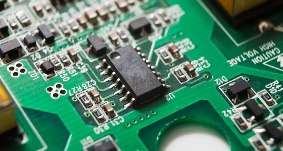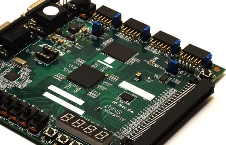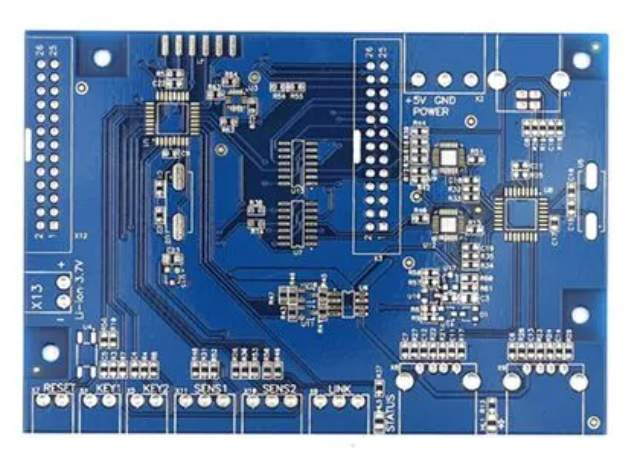
PCB circuit board design trend is to thin and small direction development. In addition to the design of high density circuit board, there are also important and complex fields such as three-dimensional assembly of soft and hard combined boards. Soft and hard combined plate is also called rigid and flexible combined plate. With the birth and development of FPC circuit board, rigid and flexible combined circuit board (soft and hard combined board) this new product is gradually widely used in various occasions. Therefore, the combination of soft and hard board, is flexible circuit board and traditional rigid circuit board, after many processes, according to the relevant process requirements combined together, the formation of a circuit board with FPC circuit board characteristics and PCB characteristics. It can be used in some products with special requirements, both flexible area and rigid area, which is of great help to save the internal space of products, reduce the volume of finished products and improve the performance of products.
Flexible circuit board materials
As the saying goes, "If you want to do a good job, you must first improve your tools." So when considering the design and production process of a hard and soft board, it is very important to make full preparations. However, this requires a certain amount of professional knowledge and understanding of the required material characteristics. The material selected by the soft and hard bonding board directly affects the subsequent production process and its performance.
People are familiar with Rigid circuit board materials and often use FR4 type materials. However, many requirements also need to be taken into account for the combination of hard and soft board materials. Need to be suitable for adhesion, good heat resistance, to ensure that after heating rigid flexible joint part of the expansion without deformation. General manufacturers use resin series of rigid plate materials.
For flexible board (Flex) circuit board materials, select smaller size expansion and shrinkage of the substrate and covering film. Generally, the material made of hard PI is used, and there are also direct use of non-adhesive substrate for production. The soft board material is shown as follows:
Base Material: FCCL(Flexible Copper Clad Laminate)
Polyimide PI. Polymide: Kapton (12.5 um / 20 um / 25 um / 50 um um / 75). Good flexibility, high temperature resistance (long-term use temperature 260°C, short-term resistance 400°C), high moisture absorption, good electrical and mechanical properties, good tear resistance. Good weather resistance and chemical resistance, good flame retardant. Polyester imide (PI) is the most widely used. Eighty percent of them are made by the American company DuPont.
Polyester PET. Polyester(25um/50um/75um). Cheap, flexible and tear resistant. Good mechanical and electrical properties such as tensile strength, good water resistance and moisture absorption. But after heat shrinkage rate is large, high temperature resistance is not good. Not suitable for high temperature solder, melting point 250°C, relatively less used.

Coverlay
The main function of the covering film is to protect the circuit, prevent the circuit from moisture, pollution and welding. Covering film thickness From1/2mil to 5 mils (12.7 to 127um).
There are several ConducTIve Layer Rolled Annealed Copper, Electrodeposited Copper and Silver sputtering/Ink. Among them, electrolytic copper crystal structure is rough, which is not conducive to fine line yield. Calendered copper has smooth crystal structure but poor adhesion to the base film. Point solution and calendered copper foil can be distinguished by appearance. Electrolytic copper foil is copper red, calendering copper foil is gray white.
AddiTIonal materials and stiffeners. A local area of rigid material on a flexible plate that has been pressed onto it in order to weld a component or add reinforcement for installation. Reinforcing film available FR4, resin plate, pressure sensitive adhesive, steel sheet aluminum sheet reinforcement.
Non-flow/Low Flow adhesive semi-cured sheet (Low Flow PP). It is used for the lamination of Rigid and Flex connections, usually of very thin PP. Generally available in 106(2mil), 1080(3.0mil/3.5mil), 2116(5.6mil).
The structural form of rigid and flexible bonded plate
Rigid and flexible binding plate is a flexible plate and then stick one or two more rigid layers, the circuit on the rigid layer and the circuit on the flexible layer through the metallization of each other. Each rigid and flexible bonded plate has one or more rigid zones and one flexible zone. As shown below is a simple combination of rigid and flexible plates with more than one layer.
In addition, a flexible circuit board and several pieces of rigid circuit board, several flexible board and several pieces of rigid board combination, using drilling, plating holes, laminating process method to achieve electrical interconnection. According to the design requirements, the design concept is more suitable for the installation and commissioning of devices and welding operations. Ensure that the advantages and flexibility of rigid and flexible combination plate are better utilized. This is a complicated case where there are more than two layers of wire.
Lamination is a composite of copper foil, P sheet, memory flexible circuit board, outer rigid circuit. The lamination of stiffly flexible bonded plates is different from that of soft plates only or rigid plates. Consider the deformation of flexible plate in the lamination process and consider the surface flatness of rigid plate. Therefore, in addition to the selection of materials, in the process of design need to take into account the appropriate thickness of the rigid plate, in order to ensure the growth and contraction of the rigid part of the same rate will not appear warping. Experiments show that the thickness of 0.8 ~ 1.0mm is suitable. At the same time, attention should be paid to the rigid plate and flexible plate from the joint part of a certain distance placed over the hole, so as not to have an impact on the rigid joint.
Rigid and flexible plate production process
We all know that the soft and hard combined board is the combination of FPC and PCB, the production of soft and hard combined board should be equipped with FPC production equipment and PCB processing equipment. First of all, the electronic engineer according to the demand to draw the line and shape of the soft binding board, and then, issued to the factory can produce the soft and hard binding board, after CAM engineers to process the relevant documents, planning, and then arrange the FPC production line to produce FPC, PCB production line to produce PCB, these two soft board and hard board out, according to the electronic engineer's planning requirements, The FPC and PCB are pressed together seamlessly by the pressing machine, and then through a series of details, the final process of soft and hard bonding board.









